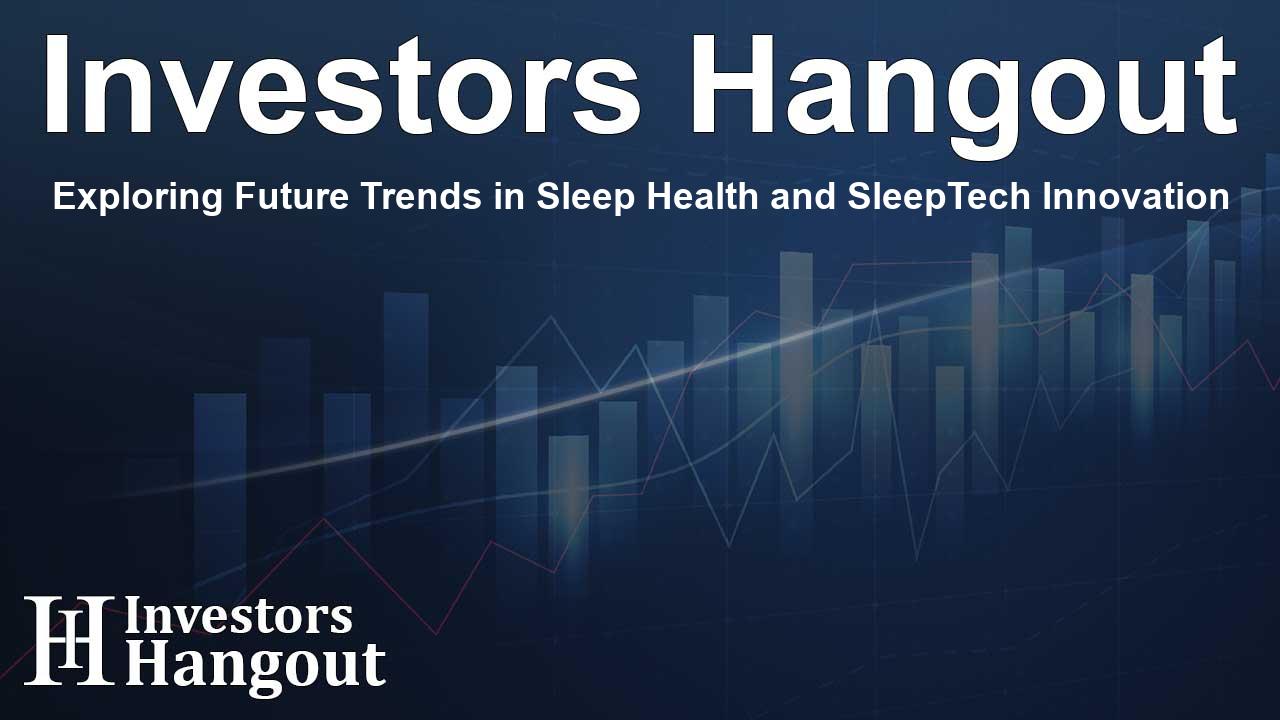Exploring Future Trends in Sleep Health and SleepTech Innovation

National Sleep Foundation Presents Vision for Upcoming Innovations
The National Sleep Foundation (NSF), a prominent authority in sleep health, has unveiled its insights on rising priorities and trends for sleep health at CES. Marking a significant milestone, NSF is celebrating its 35th anniversary as a leading advocate for sleep health. Additionally, it commemorates ten years since the inaugural SleepTech Summit's debut at CES, underscoring its long-standing commitment to improving sleep.
Contributions of SleepTech® to Sleep Quality
At CES, NSF emphasized the transformative impact of SleepTech® in promoting and diversifying innovations aimed at enhancing sleep quality. These advancements provide consumers with easier access to sleep science-backed products and services, aligning with NSF's mission to democratize sleep health. Innovations encompass a broad range of technologies from wearables to clinical solutions, all designed to create a better sleeping environment and experience for users. NSF is actively collaborating with the Consumer Technology Association (CTA) to establish standards for consumer sleep technology, which benefit developers and users alike.
Setting New Standards with SleepTech
Collaboration is at the heart of NSF's mission, seen in their recent work with the CTA to develop five standards for sleep technology, with more on the horizon, including those focusing on artificial intelligence. This cooperative approach is vital for ensuring that new products not only meet consumer needs but also contribute to advancing the field of sleep health effectively.
The Growing Sleep Economy and Its Impacts
John Lopos, NSF CEO, predicts a surge in the introduction of new SleepTech® products that will help more individuals prioritize their sleep needs. This exciting development is driven by startups, evolving platforms, and notable names within consumer brands. As sleep health continues to gain prominence, NSF expects insights related to population health data to emerge through fresh collaborations, including partnerships with Panasonic Well and Inspire Medical Systems, targeting key issues like obstructive sleep apnea.
Awareness and Education Initiatives
NSF's commitment to education is clear through its involvement in initiatives such as AARP's AgeTech Collaborative™. This membership demonstrates NSF's dedication to informing both the public and corporations involved in promoting sleep health, highlighting the social responsibility aspect of this vital topic.
Addressing Sleep Insufficiency in the Workplace
As remote and hybrid work models become commonplace, NSF anticipates a stronger emphasis on sleep health within organizational cultures. Recent data unveiled at CES reveals that a staggering 60% of Americans experience reduced productivity due to insufficient sleep. This issue extends beyond the workplace, impacting daily decision-making and problem-solving abilities. Joseph Dzierzewski, PhD, NSF's Senior Vice President of Research and Scientific Affairs, highlighted the universal significance of sleep health across all workplace sizes, emphasizing that dedicated efforts can yield substantial improvements in performance.
Leveraging Research for Better Outcomes
Research plays a crucial role in comprehending the broader impacts of sleep health on overall well-being. By emphasizing the importance of sleep education and advocacy, NSF aims to empower individuals and organizations to make informed decisions that encourage healthier sleep habits.
About the National Sleep Foundation
The National Sleep Foundation (NSF) stands as an independent nonprofit established to enhance public health through focused sleep education and advocacy. Since its inception in 1990, NSF has played a pivotal role in enhancing sleep health theories and practices through contributions that encompass recommendations, research initiatives, and user-friendly tips to elevate sleep quality. For detailed information about NSF, please visit www.theNSF.org, and their journal, SleepHealthJournal.org.
Frequently Asked Questions
What is the National Sleep Foundation's main goal?
The main goal of NSF is to improve health and well-being through education and advocacy focused on sleep health.
What new trends in SleepTech® were discussed at CES?
Trends include increased accessibility of sleep science products and innovations in new technologies aimed at enhancing sleep quality.
How does NSF support sleep health in the workplace?
NSF aims to promote awareness of the negative impacts of sleep insufficiency on productivity and encourages employers to prioritize sleep health initiatives.
What partnerships has NSF formed recently?
NSF has collaborated with Panasonic Well and Inspire Medical Systems, among others, to tackle issues concerning sleep health, particularly obstructive sleep apnea.
How can individuals access NSF's resources?
Individuals can access NSF's resources and recommendations through their official website and by exploring their published guidelines and tools aimed at improving sleep.
About Investors Hangout
Investors Hangout is a leading online stock forum for financial discussion and learning, offering a wide range of free tools and resources. It draws in traders of all levels, who exchange market knowledge, investigate trading tactics, and keep an eye on industry developments in real time. Featuring financial articles, stock message boards, quotes, charts, company profiles, and live news updates. Through cooperative learning and a wealth of informational resources, it helps users from novices creating their first portfolios to experts honing their techniques. Join Investors Hangout today: https://investorshangout.com/
Disclaimer: The content of this article is solely for general informational purposes only; it does not represent legal, financial, or investment advice. Investors Hangout does not offer financial advice; the author is not a licensed financial advisor. Consult a qualified advisor before making any financial or investment decisions based on this article. The author's interpretation of publicly available data shapes the opinions presented here; as a result, they should not be taken as advice to purchase, sell, or hold any securities mentioned or any other investments. The author does not guarantee the accuracy, completeness, or timeliness of any material, providing it "as is." Information and market conditions may change; past performance is not indicative of future outcomes. If any of the material offered here is inaccurate, please contact us for corrections.